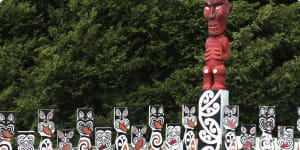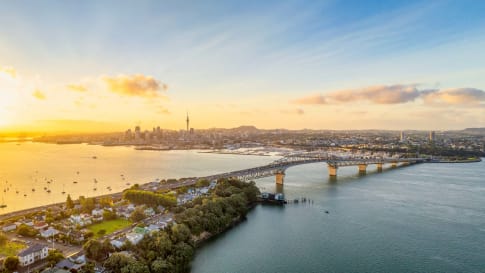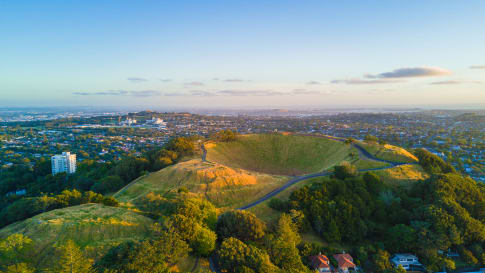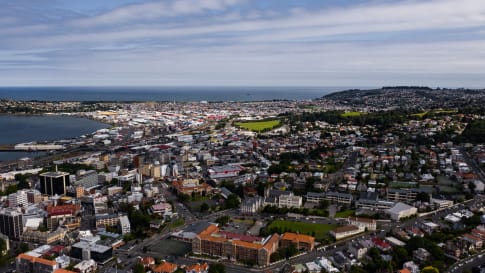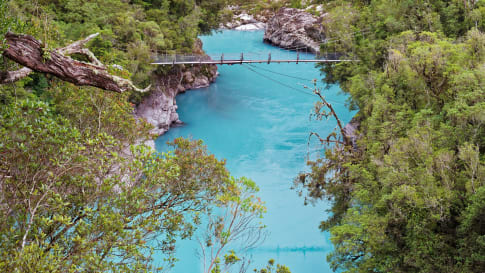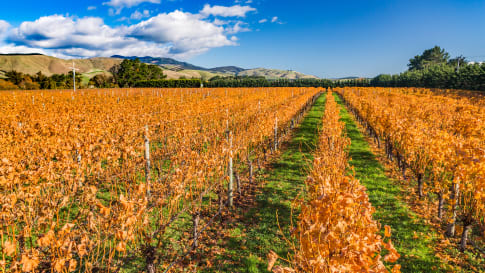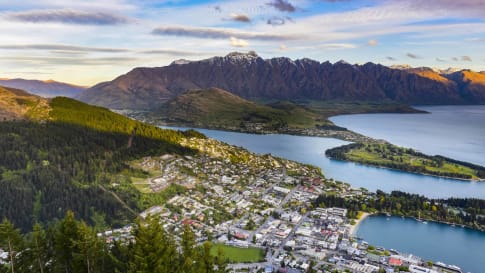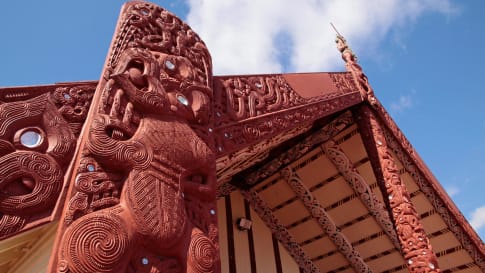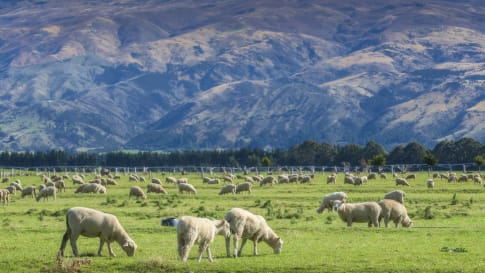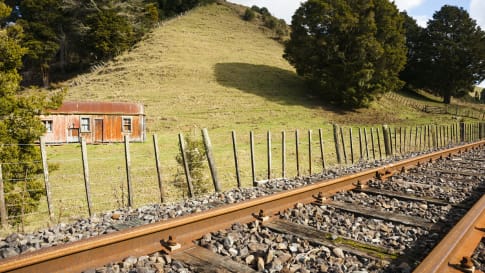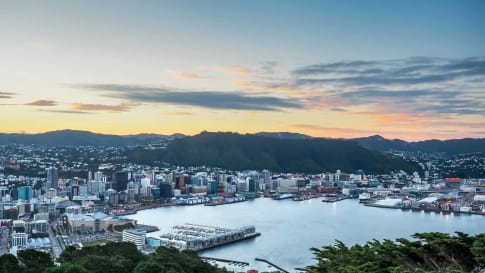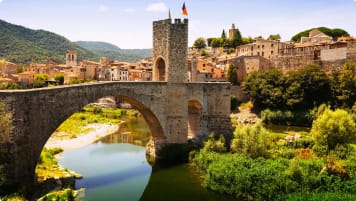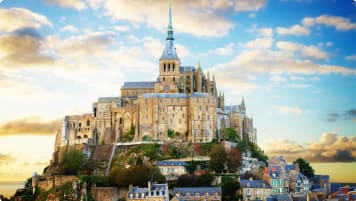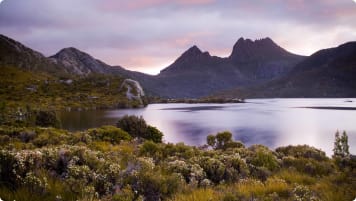New Zealand: An Odyssey Down Under
A guided small group tour of both the North island and the South island. Your travel itinerary includes Auckland, Rotorua, Milford Sound, Queenstown and Christchurch. Maori culture also forms part of the journey to provide a memorable New Zealand tour experience.
From A$12,595AUD

Highlights
- 1. Experience New Zealand’s thermal wonderland, Te Puia Thermal Reserve, in Rotorua.
- 2. Enjoy a guided tour through New Zealand's Capital city, Wellington
- 3. Cruise the acclaimed Milford Sound in the Fiordland National Park
- 4. Tour Queenstown with a knowledgable local guide.
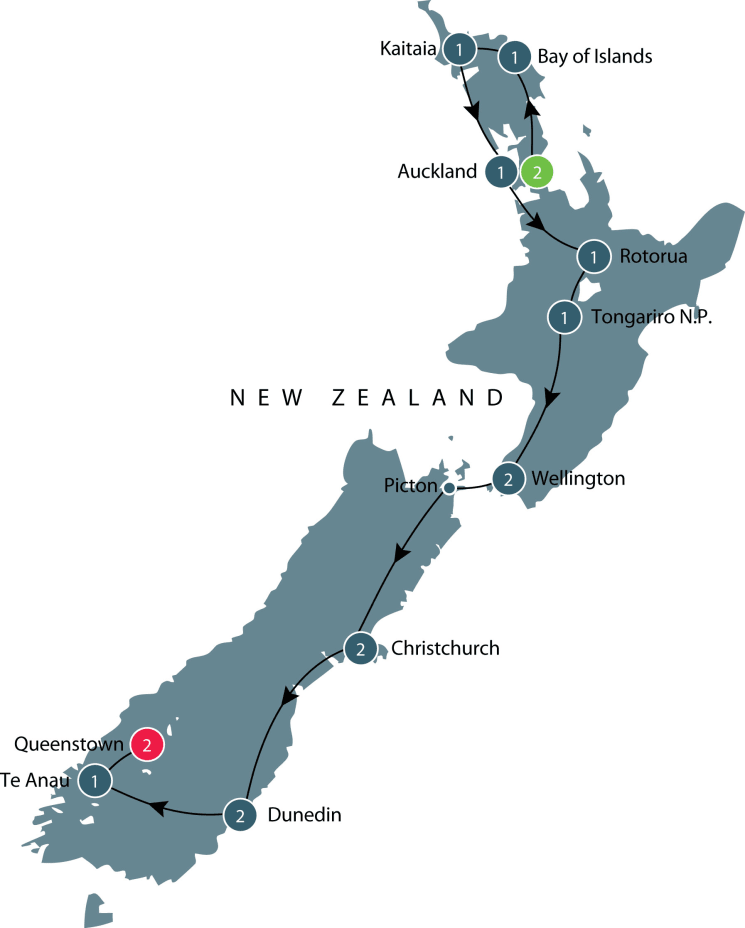
Departure Dates
| Departure Date | Price |
|---|---|
| 08 September 2025 Ends 24 September 2025 • 17 days A$13,225 Twin A$15,425 Single Available | Selected |
| 20 October 2025 Ends 05 November 2025 • 17 days A$13,225 Twin A$15,425 Single Available | |
| 24 February 2026 Ends 12 March 2026 • days A$13,225 Twin A$15,425 Single Available | |
| 07 March 2026 Ends 23 March 2026 • days A$13,225 Twin A$15,425 Single Available | |
| 07 September 2026 Ends 23 September 2026 • days A$13,225 Twin A$15,425 Single Available | |
| 19 October 2026 Ends 04 November 2026 • days A$13,225 Twin A$15,425 Single Available |
New Zealand Small Group Tour
Odyssey offers easy, convenient, and relaxed escorted small group tours across New Zealand. We explore New Zealand's fairy-tale natural beauty, its ancient landscapes its World Heritage Sites, and famous cities, all with some truly spectacular scenery along the way. This and more is all waiting to be explored on one of Odyssey’s small group tours of New Zealand, designed for the senior traveller, and led by experienced, and enthusiastic like minded people.
NOTE; This program may be run in reverse, that is from the South island to the North island. Please contact Odyssey to confirm tour direction.
This New Zealand small group tour for senior and mature travellers will guide travellers through the landscapes of both the North Island and the South island as well as having an opportunity to observe the native wildlife in the national park network and learn about the history of this incredible island country. Travellers on this tour of New Zealand observe the landscape of the North island shaped by Volcanism, from the basalt volcanic cones that dominate Auckland to the geothermal activity including boiling mud in Rotorua. Leaving Rotorua this guided tour travels through landscapes of sharp hills covered in native bush or pasture south to Wellington to take the interislander ferry to the South island. The hard spine of Southern Alps that dominate the South island soon appear after we leave Picton. The Southern alps dominate, hiding the travellers view through to the west coast, only a few passes such as Arthurs pass, Haast pass and Franz Josef allow you through to other side of the South island and the Tasman sea. For the traveller in the South island, the scenic sights are numerous and appear to be on a grander scale from the Abel Tasman National park or Queenstown, Lake Wakatipu and Fjordland National park.
The arrival of the Europeans dominated by British settlers in New Zealand set in motion a startling and ultimately largely successful co-existence with the Maori people that we will see and experience on this educational trip. The traditional owners of the land and immigrants had to come to terms with fiercely disparate environments and climates, from the subtropical north to the alpine south. This is the route we will follow on this tour, moving from the North Island to the South Island, as we track the Maori people from the dawn of history to the present time.
On this 17-day New Zealand tour, mature and senior travellers taking this trip will experience the best of both the North and the South Island. We will begin the tour of New Zealand in Auckland in the North Island, moving south to Rotorua and to the island’s southern tip Wellington, the capital of New Zealand. In South Island, we visit Christchurch, moving south to Dunedin and then Queenstown where the tour will conclude.
This small group tour will be accompanied by an Odyssey Program Leader and local guides who will impart their knowledge about the places we will visit on the trip. Odyssey conducts educational tours with small groups of mature and senior travellers, focusing on history, culture and architecture. Group size is typically between 6 to 12 people. The cost of the tour is inclusive of all entrances (unless otherwise indicated), tipping, and majority of the meals.
This particular tour of New Zealand has periods of free time built into the itinerary, allowing you to explore some destinations at your own pace, and choose from a variety of available activities. This way, we make sure that there is something to enjoy for every kind of traveller.
New Zealand Small Group Tour for seniors; Itinerary & Highlights
New Zealand (Maori name: Aotearoa) is an island country with a total land area of 268,000 square kilometres (103,500 sq. mi) in the southwestern Pacific Ocean. It is one of the most southernmost countries in the world, about 2,000 kilometres (1,200 mi) east of Australia across the Tasman Sea and 1,000 kilometres (600 mi) south of the Pacific islands of New Caledonia, Fiji, and Tonga. The country has two main islands: The North Island (Te Ika-a-Māui) and the South Island (Te Waipounamu), and about 600 smaller islands.
North Island
This Seniors small group tour of New Zealand starts in the North Island in Auckland where we start with a day tour of the city including "Tamaki Drive" out to Mission bay, and Mt Eden. We take a guided tour of the Auckland War memorial museum to gain an understanding of New Zealand culture and geographical presence in the South Pacific.
We then head south to Rotorua. The group has a guided tour of Te Puia Thermal Reserve, the centre of Maori culture and a site of incredible geological activity. We spend time exploring some of the many attractions of Rotorua, including the New Zealand Maori Arts and Crafts Institute and its many traditional villages, before enjoying a traditional Maori performance and getting to know the Maori culture.
Moving South, we stop at the Waimangu Volcanic Rift Valley an active geo-thermal park. The Waimangu Volcanic Rift Valley was once known as Mount Tarawera. We continue onto Lake Taupo, a massive lake created by a volcanic eruption to arrive for a night in the Tongariro National park. In Wellington, we will enjoy a guided walking tour of New Zealand’s capital city, finishing at Te Papa Museum on the waterfront.
South Island
Taking the Cook Strait interislander ferry to the South Island, we travel from Wellington to Christchurch. This is a relaxing three-hour journey that will take you through New Zealand’s breathtaking scenery and landmarks, stopping en route at the beautiful coastal town of Kaikoura for lunch.
We spend two nights in Christchurch, with one day spent with a local tour guide and another day free. An interesting sight nearby is the rock formations of Castle Hill, described by the Dalai Lama as one of the 'spiritual centres of the universe'. We then head to Dunedin to explore and learn about a city designed in Edinburgh, Scotland.... On our way to Dunedin we pause in Oamaru to explore Oamaru’s quirky Victorian Precinct, famous for its Steampunk playground and restored buildings.
From Dunedin this small group tour travels to Te Anau for a night. A small settlement next to the Fiordland National Park, (Fjordland National park) part of UNESCO World Heritage site, Te Wāhipounamu. After overnighting, we take a journey up to see Milford Sound, a drowned glacial valley created in the last ice age! The afternoon we drive around to Queenstown. We spend our last full day in Queenstown, with a local guides.
If you would like to learn more about New Zealand, check out our country profile. For more details about this tour, click the ‘Top 5’ or ‘Itinerary’ buttons above! If you’re keen to experience this tour, please call or send an email. Or, to book, simply fill in the form on the right hand side of this page.
USA/Canada visitors; Please call the 1-877-770-0446 Toll Free number
Articles about New Zealand published by Odyssey Traveller
- Questions About New Zealand
- Definitive Guide to Auckland, New Zealand
- Foundations for democracy in New Zealand: 900s - 1945
For all the articles Odyssey Traveller has published for mature aged and senior travellers, click through on this link.
External articles to assist you on your visit to New Zealand
Gallery
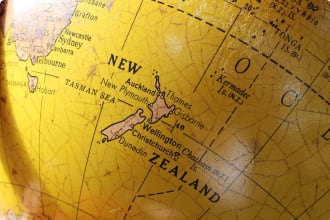
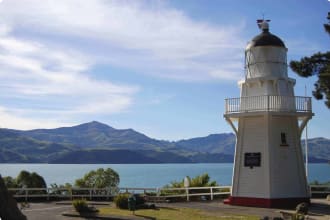
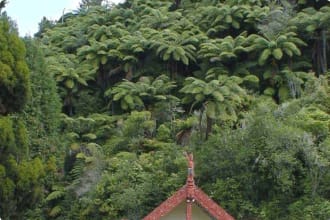
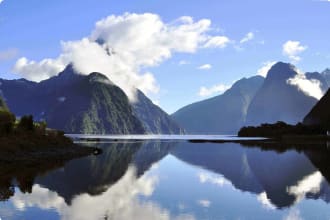
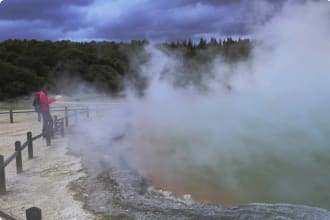
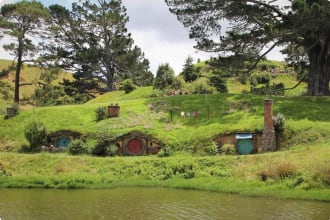
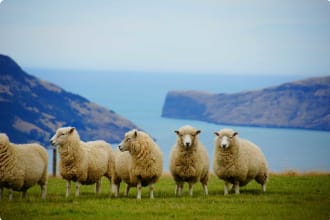
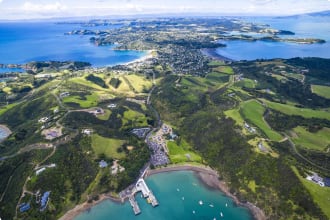
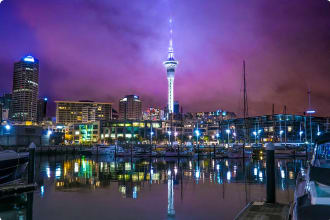
Itinerary
17 days
Day 1: Auckland
Accommodation: Auckland TBC
We make our own way to our hotel in Auckland, New Zealand’s most populous urban area.
Auckland, like Rome, is built on a series of hills, extinct volcanoes. We arrive in the evening and will have the time to look out from these hills and see the largest volcanic presence within the city limits, Rangitoto Island, whose symmetrical form is emblematic of New Zealand’s largest city.
Our Welcome Dinner tonight at the iconic Sky Tower will confirm our panoramic impressions, as will our specialist commentator who will give us a tour d’horizon of Auckland’s origins as a Maori centre, and of its thrilling colonial development as New Zealand’s great merchant city.
Day 2: Auckland
Accommodation: Auckland TBC
Auckland has the largest concentration of indigenous Maori, and was the capital of New Zealand before it was replaced by Wellington in 1865. It is the country’s hub of industry.
This morning we will enjoy a tour of the city, visiting its main attractions, including:
- Queen Street – major commercial thoroughfare in the Auckland CBD, an early development in the newly founded town of Auckland in 1849
- Tamaki bay drive through from the City to Mission bay
- Bastion Point – overlooking the Waitemata Harbour, and the site of Maori protests against European settlers and the British Crown, who planned to sell Bastion Point to the highest bidder instead of returning the land to its traditional Maori owners
- Mission Bay – a waterfront suburb, providing views of Rangitoto Island.
- Upto Mt Eden for a panorama of the city and its twin Harbours.
- Auckland War Memorial Museum– neoclassical building housing lavish displays of Polynesian and colonial artefacts and presentations of Auckland past, present, and future
Auckland straddles New Zealand’s northern isthmus, and ferry travel between its numerous islands is part of daily life. This afternoon, we take a break from the bustle of the city and go on a relaxing scenic cruise of Auckland’s Waitemata harbour, sailing under the Harbour Bridge and learning about Auckland’s maritime history from our guide over afternoon tea.
Day 3: Auckland - Bay of Islands
Accommodation: Pahia or kerikeri. TBC
Today we leave early for the Bay of Islands.
This afternoon there is a scheduled tour of the islands. Group meal this evening.
Day 4: Cape Reinga- Kaitaia
Accommodation: Kaitaia or surrounds TBC.
Today, we travel to the top of New Zealand, Cape Reinga. Stopping along our route, there and on our return to Kaitaia at relevant local places to explore and lean about. Picnic lunch provided.
Group meal this evening.
Day 5: Kaitaia to Auckland
Accommodation: Auckland TBC.
The group returns to Auckland along the west coast route.
Day 6: Auckland - Rotorua
Accommodation: Rotorua - TBC
Today we will depart Auckland for Rotorua.
In Rotorua, we will have a guided tour of Te Puia Thermal Reserve, the centre of Maori culture and a site of incredible geological activity. This landscape is filled with boiling hot pools and incredible geysers.
This is the heart of New Zealand’s Thermal Wonderland. We view the bubbling hot pools and the gushing geysers, feeling the ground shaking under our feet. This too is the heart of Maori culture, and we will see for ourselves how for generations they used the thermal activity to their great advantage in cooking and heating.
The Pohutu (Maori: ‘constant splashing’) geyser is the most active geyser in the Southern hemisphere, erupting twice every hour, with eruptions reaching heights of 30 metres. Te Puia also houses the New Zealand Maori Arts and Crafts Institute, and villages showcasing traditional Maori architecture.
In the evening we will have a traditional dinner at the Tamaki Maori Village, and enjoy a cultural performance travellers from many of the other group tours that stop in Rotorua.
Day 7: Rotorua - Tongariro National park
Accommodation: Tongariro National Park
Departing Rotorua for Tongariro National park we stop to visit the active geothermal area the Waimangu Volcanic Rift Valley. The Waimangu Volcanic Rift Valley was once known as Mount Tarawera and was famous for its Pink and White Terraces They were described as the “Eighth Wonder of the World” during the Victorian era. The volcanic eruption of 1886 blasted away the mountain and burying the pastel, multi-hued terraces under a thick layer of volcanic mud.
We continue South pausing to we visit Lake Taupo. Taupo was created by one of world’s most powerful volcanic eruptions. The lake is nearly the size of Singapore, and is often called an ‘inland sea’. Keeping with volcanic theme fro the last 2 days we travel onto the Tongariro National park, where we spend the evening.
Group meal this evening.
Day 8: Tongariro - Wellington
Accommodation: Wellington. TBA
Today we will be travelling onwards to Wellington, capital of NZ. We will be stopping along the way, intending to arrive in Wellington by mid Afternoon.
Group dinner.
Day 9: Wellington
Accommodation: Wellington. TBA
Wellington has been the nation’s capital since 1856. We will enjoy a guided tour in this beautiful city on foot. We take the Wellington Cable Car, New Zealand’s only running funicular railway. This ride will take you from the heart of the city to a lookout that will give you a view of Wellington. You can walk through the Botanic Garden, and visit the historic Pioneer Cemetery established in the 19th century.
The tour of Wellington finishes in the Waterfront precinct close to the National Museum of New Zealand “Te papa”. We have tickets for entry into the Museum, the remainder of the afternoon is at your leisure.
Day 10: Wellington-Picton- Christchurch
Accommodation: Christchurch.TBA
Today we will be travelling from Wellington to Christchurch, taking the early interislander ferry across the Cook Strait to Picton. Then is a relaxing three-hour journey that will take you through New Zealand’s breathtaking scenery and landmarks following the coastline to Christchurch.
The group will stop at the beautiful coastal town of Kaikoura for lunch.
Group Dinner.
Day 11: Christchurch
Accommodation: Christchurch TBA
Today our local guide assists both on foot and in the Coach to spend the morning exploring and learning about Christchurch, the largest city in New Zealand’s South Island. Time permitting we will head over to the French inspired settlement of Lyttelton to learn more about this European settlement. In the early afternoon our day tour will possibly finish on the coast at Sumner where you can explore at your leisure or return to Christchurch.
This reminder of the afternoon is at your leisure.
Day 12: Christchurch - Dunedin
Accommodation: Dunedin TBA
Today we will be travelling from Christchurch running close to the coast all the way to Dunedin. We stop at Oamaru en-route to explore the quirky Victorian Precinct, famous for its Steampunk playground and restored buildings.
Day 13: Dunedin
Accommodation: Dunedin TBA.
With a local guide Dunedin, to explore and learn about a city designed in Edinburgh, Scotland…. Dunedin was once the largest city in New Zealand and on this tour of the city we see and learn about some terrific buildings and monuments from the Victorian Era including the university and Railway station. There is also likely to be time to visit the worlds steepest street as laid out by the Scottish surveyors in Edinburgh.
We also visit the beautiful gardens and historic house of New Zealand’s only castle, Larnach Castle. It was built by the entrepreneur and politician, William Larnach.
Day 14: Te Anau
Accommodation: Te Anau TBA
Today we will travel from Dunedin to Te Anau via Invercargill. We break for lunch in Invercargill and enjoy a short guided tour of the city, which have the only South facing harbour in the world. Te Anau is a small settlement next to the Fiordland National Park, part of Unesco World Heritage site, Te Wāhipounamu. There may be the opportunity to explore some of the history between Dunedin and Te Anau
Group meal this evening
Day 15: Te Anau - Milford Sound - Queenstown
Accommodation: Queenstown TBA
Today we venture with many others to take what is described a highlight of ant visit to the South Island, a 90 minute cruise on Milford sound in the Fiordland National park
- Milford Sound day trip – a boat cruise through the amazing cliffs of Milford Sound in Fiordland National Park, the cliffs carved by glaciers during the ice ages.
In the afternoon we travel past the National park on our way to Queenstown by road through the Southern alps.
Day 16: Queenstown
Accommodation: Queenstown TBA
Today we have a day tour to explore Queenstown with our knowledgable local guide.
In the afternoon we take a ride on the tss Earnslaw, a coal fired steam vessel assembled during the gold rush era on the banks of Lake Wakatipu and it has been restored down to its last brass fitting. It is in regular service and is still the main cargo conduit between Queenstown and the sheep stations, as ranches are known, that line the narrow twisting lake.
Queenstown is a historic gold mining town is the winter sports capital of New Zealand and in the views of many, the adventure capital of the world. The fast-flowing narrow-ravined rivers that once powered the gold sluices have become now the habitat for jet boaters and bungee jumpers.
In the evening we will meet again for our farewell dinner.
Day 17: Queenstown
Today concludes after breakfast.
Includes / Excludes
What’s included in our Tour
- 16 nights accommodation.
- 16 breakfasts, 7 dinners. 1 picnic lunch.
- Transport by modern and comfortable coach.
- Entrances and sightseeing as specified.
- Services of Tour Leader for the duration of tour
- Detailed Preparatory Information
What’s not included in our Tour
- Return international airfare and departure taxes.
- Comprehensive travel insurance.
- Items of a personal nature, such as telephone calls and laundry
Participants must be able to carry their own luggage, climb and descend stairs, be in good health, mobile and able to participate in 3-5 hours of physical activity per day, the equivalent of walking / hiking up to 8 kilometers per day on uneven ground.
Book now
Make it a private tour
Easing your journey
Crossing international borders with restrictions
The list of requirements to travel internationally has changed and will continue to change for several years. Odyssey is here to assist you in managing your way through these requirements:
For more information see our Crossing international borders with restrictions page.
Book With Confidence
If less than 30 days before your tour starts you are unable to travel as a result of Government travel restrictions, Odyssey Traveller will assist you with a date change, provide you with a credit or process a refund for your booking less any non-recoverable costs.
See Terms and conditions for details.
Peace of Mind Travel
The safety of our travellers, tour leader, local guide and support staff has always been our top priority and with the new guidelines for public health and safety for keeping safe for destinations around the world, we’ve developed our plan to give you peace of mind when travelling with us.
See Peace of Mind Travel for details.
Reading List Download PDF
Penguin History Of New Zealand
Michael King
New Zealand was the last country in the world to be discovered and settled by humankind. It was also the first to introduce full democracy. Between those events, and in the century that followed the franchise, the movements and the conflicts of human history have been played out more intensively and more rapidly in New Zealand than anywhere else on Earth.The Penguin History of New Zealand, a new book for a new century, tells that story in all its colour and drama. The narrative that emerges in an inclusive one about men and women, Maori and Pakeha. It shows that British motives in colonising New Zealand were essentially humane; and that Maori, far from being passive victims of a 'fatal impact', coped heroically with colonisation and survived by selectively accepting and adapting what Western technology and culture had to offer.This book, a triumphant fruit of careful research, wide reading and judicious assessment, was an unprecedented best-seller from the time of its first publication in 2003.
The New Zealand wars; a history of the Maori campaigns and the pioneering period
James Cowan
The New Zealand wars; a history of the Maori campaigns and the pioneering period.
Maori and Settlers (Annotated with Historic Overview): A Story of the New Zealand War
G.A. Henty
This classical novel is devoted to one episode of New Zealand history. The details of the struggle between white settlers and Maoris are artfully mixed up with the plot full of adventures and romance.
Hunt for the Wilderpeople: Wild Pork and Watercress
Barry Crump
When Ricky's beloved Aunt Bella dies and Social Welfare threatens to put him into care, the overweight Maori boy and cantankerous Uncle Hec flee into the remote and rugged Ureweras. The impassable bush serves up perilous adventures, forcing the pair of misfits to use all their skills to survive hunger, wild pigs and the vagaries of the weather. Worse still are the authorities, determined to bring Ricky and Uncle Hec to justice. But despite the difficulties of life on the run, a bond of trust and love blossoms between the world-weary man and his withdrawn side-kick.
This rattling good yarn has now been made into a major movie: Hunt For the Wilderpeople, directed and written by Taika Waititi, and starring Sam Neill and Julian Dennison.
Great Tales from New Zealand History
Gordon McLauchlan
An intriguing collection of tales plucked from the byways of New Zealand’s history by a master storyteller who recognises a good yarn when he sees it. Gordon McLauchlan tempts our imagination with 46 little-known tales from the past. Here you will discover:
- that Auckland applied twice to the Colonial Office to be a separate colony from the rest of New Zealand
- more about the man who wanted to be James Cook
- when drinking beer legally became an ‘art’ on the West Coast
- whether Kupe was man or myth
- how Hawera seceded and became a republic
- when and why the Americans planned to invade New Zealand
- which aviation heroine was called a ‘naughty girl who deserved a spanking’
- why a posse of politicians committed suicide . . . and more.
This great collection of tales explores these and many more questions and issues which have fascinated New Zealanders and filled many a page in many a history book over the years. Gordon McLauchlan brings a fresh perspective on some old and often vexed periods in New Zealand’s history.
New Zealand Stories: Mansfield Selections
Katherine Mansfield
Ten stories from the 'brilliant' Katherine Mansfield set in New Zealand.As Vincent O'Sullivan states, those encountering Mansfield's stories for the first time have invariably found they 'were alive, they were witty, they were moving, they covered new ground'. But with about 70 stories to choose from and a vast array of themes and approaches, where do you start, and how do you begin to understand and best appreciate her writing and achievements? This series features selections of her best stories, grouped by subject and introduced by Mansfield scholar Vincent O'Sullivan, who is also a writer of fiction in his own right. Each volume offers a different way to view Mansfield's work. This selection includes her most-loved stories about the New Zealand of her childhood. As O'Sullivan explains, his choices cover 'everything of importance that happened to her, that she observed and experienced, between childhood in Wellington's wooden houses, to her deciding in Switzerland in July 1922, that her final paragraph about a singing bird was the place for her to stop'.
Last Train to Paradise: Journeys from the Golden Age of New Zealand Railways
Graham Hutchins
LAST TRAIN TO PARADISE is a celebratory account of a time when train travel was more than just the accepted means of travelling around New Zealand. It was also an era when rail journeys provided excitement, companionship and romance.
Royal trains, troop trains, rugby specials, tourist trains ... all come to life in Graham Hutchins’ evocative descriptions of rail travel in the golden age.
In the first half of the twentieth century, travelling by train was the easiest way to get around New Zealand. Lines existed between most provincial towns, and world-famous visitors like Mark Twain and Lord Kitchener frequented the network. The Rotorua Limited carried the well-to-do in some style to take the waters in Rotorua; the Central Otago Express ventured through the tussock hinterland as far as Cromwell; the Auckland-Opua Express took passengers keen to discover the delights of the Bay of Islands; while the Onehunga Boat Train used to be part of the main route between Auckland and Wellington.
LAST TRAIN TO PARADISE describes the halcyon days of New Zealand rail, some of which the author was fortunate enough to experience personally. The ‘name’ trains and journeys cover a considerable period of New Zealand’s history, from the late 1800s to the golden era of train travel (the first five decades of the twentieth century). Among the special journeys covered are the Prince of Wales’ royal progress through New Zealand in 1920, and travelling with fans on the ‘Test Match Special’ to enjoy the rugby in 1956. Graham Hutchins vividly evokes a way of life that has all but disappeared, recalling a host of characters and incidents from an age less obsessed with the motorcar. The book includes a wide variety of fascinating and unfamiliar photographs, both of the trains themselves and the people who travelled in them.
Graham Hutchins is a long-time railway enthusiast and a frequent traveller on the New Zealand rail network. Among several books he has written on the subject is ‘Great New Zealand Railway Journeys’ (Exisle 2008). He has also written extensively on rugby, cricket, rock music and a range of other subjects. Although some of the lines described in ‘Last Train to Paradise’ have closed, he remains optimistic about the future of train travel in New Zealand. Graham Hutchins is a full-time writer living in Hamilton.
New Zealand Unleashed: The Country, Its Future and the People Who Will Get It There
C Murray, Campbell Murray, S Carden, Steven Carden
A futurist's vision for a strong, economically successful and positive New ZealandThe future is coming. The question is: are we ready? New Zealand Unleashed is a look at what sort of society New Zealand will need to be to best tackle an unpredictable future. It is about how New Zealand can thrive on the uncertainty of the future, rather than fear and resist it. In this book Steven Carden doesn't outline what New Zealand should do, rather he argues how New Zealand should be.To accomplish that, he examines aspects of biology, physics, psychology, New Zealand's history, business and education. New Zealand Unleashed is divided into four parts: Part One - The End of Certainty - Why does the pace of change seem so rampant today, the future so uncertain, and why does that unnerve us so much? Part Two - How to Build a Successful Society - Given that uncertainty and complexity is an increasing fact of life, what are the three key traits that successful societies use to deal with it? Part Three - New Zealand's DNA - Has New Zealand exhibited these three key traits in the past, and what does it tell us about our ability to cope with change and uncertainty in the future? Part Four - A Few Ideas for a More Adaptive New Zealand - How can New Zealand nurture these three key traits to help build a stronger country in the future?
A Short History of New Zealand
Gordon McLauchlan
A new edition of the bestselling short history on New Zealand, updated to include the Helen Clark years, the rise of John Key, the Christchurch earthquakes and the 2011 Rugby World Cup! A lively and accessible history written by one of New Zealand’s most well-known commentators on matters past and present. Succinct and well referenced, this book is the most accessible introduction to New Zealand history currently in print.
History and Traditions of the Maoris of the West Coast, North Island of New Zealand Prior to 1840
Stephenson Percy Smith
Excerpt from History and Traditions of the Maoris of the West Coast, North Island of New Zealand Prior to 1840
This history is much longer than perhaps suits the ordinary reader indeed, it is over a hundred pages more than was originally contemplated. But the amount of information collected will prove of interest to those living in the localities mentioned in after times; and it could never be collected again, for the old men who gave it have now passed on to Te Hono-i-wairua.
To others than members of the Polynesian Society it is right to say that the book has been published in the Society's Journal by instalments - it would otherwise never have appeared on account of the expense - and that the number of maps in it is due to the liberality of the Government, who had them drawn and printed at their expense.
About the Publisher
Forgotten Books publishes hundreds of thousands of rare and classic books. Find more at www.forgottenbooks.com
This book is a reproduction of an important historical work. Forgotten Books uses state-of-the-art technology to digitally reconstruct the work, preserving the original format whilst repairing imperfections present in the aged copy. In rare cases, an imperfection in the original, such as a blemish or missing page, may be replicated in our edition. We do, however, repair the vast majority of imperfections successfully; any imperfections that remain are intentionally left to preserve the state of such historical works.
New Zealand: People, Places and Events that Shaped the History of New Zealand
James Boyle
New Zealand is a country that has forever been admired for its beautiful landscapes – a wilderness that barely seems to be touched by humans. The populated areas are surrounded by forests, plains, rocky mountains – even beaches. All of this gives New Zealand that heavenly vibe.
However, the place we admire today has been heavily affected by its history. People who wanted to farm the land versus people who wanted to keep the land the way it is. A land that, despite the wars it had been through, has managed to hang on to its beauty.
Packed with colonization, war and expansion, the history of New Zealand is something everyone should know and study in this day and age.
The Penguin History of New Zealand
Michael King
New Zealand was the last country in the world to be discovered and settled by humankind. It was also the first to introduce full democracy. Between those events, and in the century that followed, the movements and conflicts of human history have been played out more intensively and more rapidly in New Zealand than anywhere else on Earth.
The Penguin History of New Zealand tells that story in all its colour and drama. The narrative that emerges is an inclusive one about men and women, Maori and Pakeha. It shows that British motives in colonising New Zealand were essentially humane; and that Maori, far from being passive victims of a 'fatal impact', coped heroically with colonisation and survived by selectively accepting and adapting what Western technology and culture had to offer.
Pounamu Pounamu
Witi Ihimaera
Pounamu Pounamu is classic Ihimaera. First published om 1972, it was immediately endorsed by Maori and Pakeha alike for its original stories that showed how important Maori identity is for all New Zealanders. As Katherine Mansfield did in her first collection In a German Pension (1911), and Janet Frame in The Lagoon (1951), Witi Ihimaera explores in Pounamu Pounamu what it is like to be a New Zealander - but from a Maori perspective. The seeds of Ihimaera's later works are first introduced in this ground-breaking collection: The Whale Rider in his story 'The Whale', The Rope of Man in 'Tangi', and the character of Simeon form Bulibasha, King of the Gypsies in 'One Summer Morning'; and the themes of aroha (love), whanaungatanga (kinship) and manaakitanga (supporting each other), which are so intergral to Ihimaera's work.
Do They Speak English Down There?
Susan C. Tunney
Read how one family transformed a fantasy into reality when they traded in their San Diego lifestyle to move to rural New Zealand along with the challenges it presented adapting to a new culture. From duct tape to #8 wire, its been one helluva journey.
